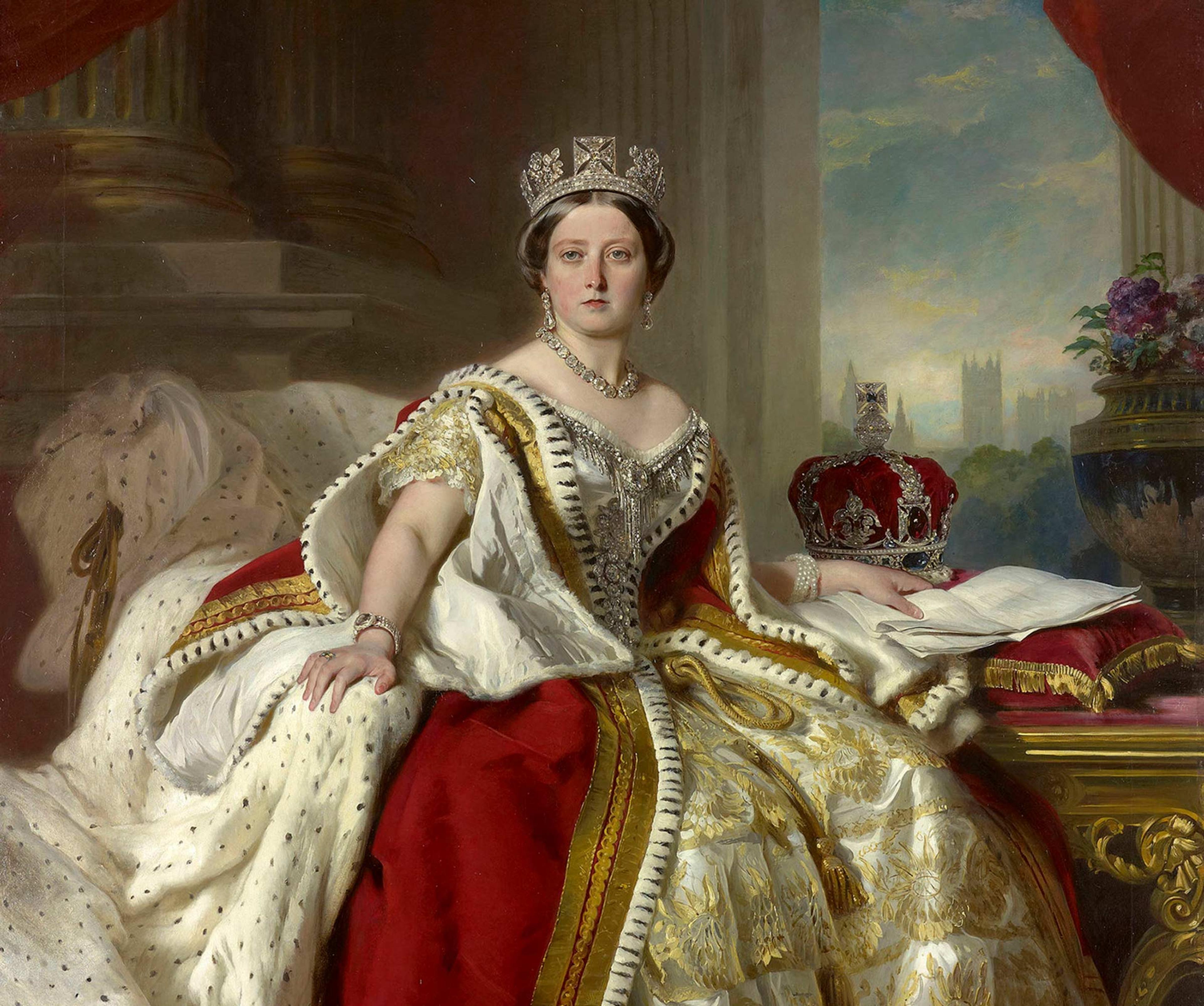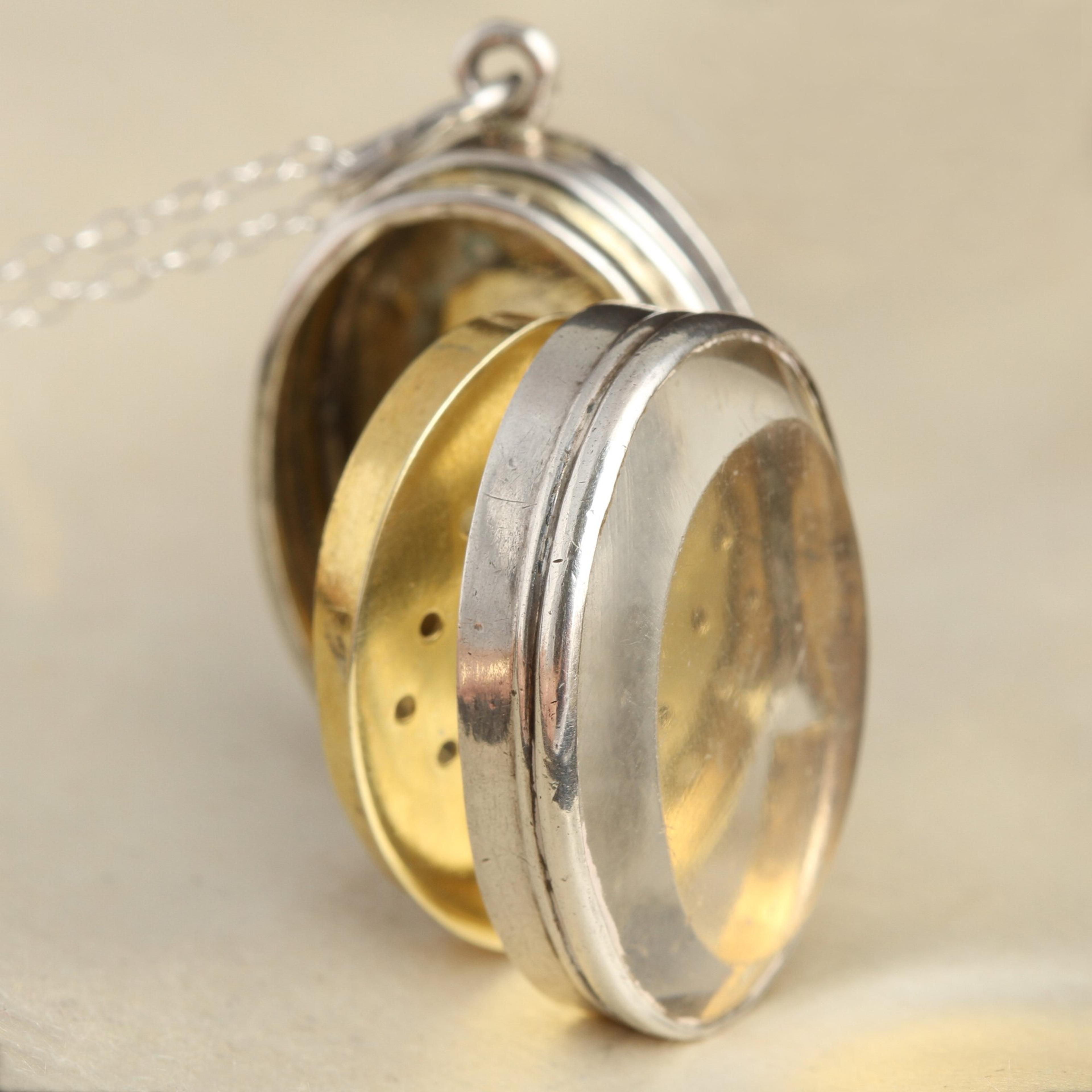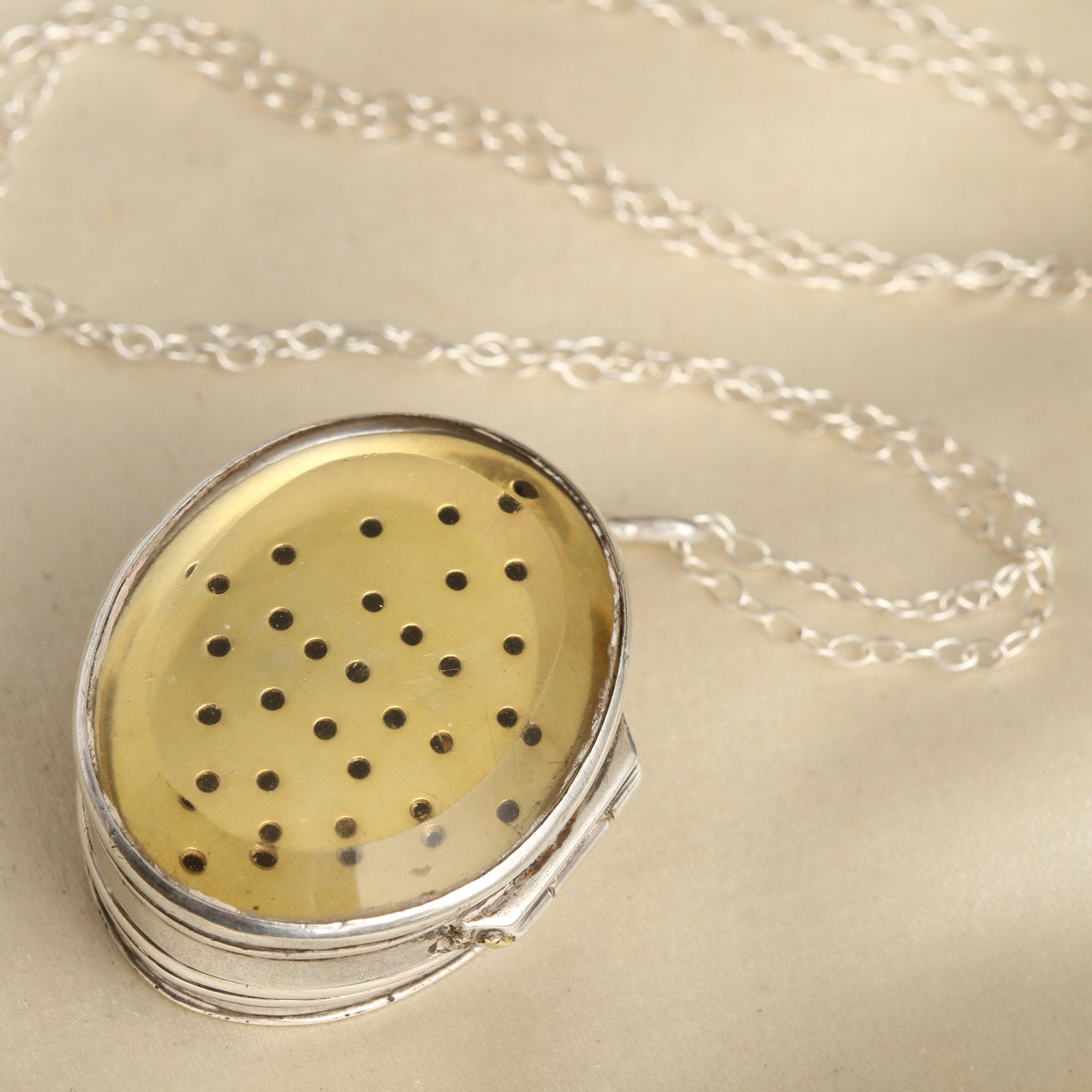Personal cleanliness standards in the 19th century were not quite what they are today. Prior to the debunking of the myth that bathing was dangerous for the health, the widespread availability of soap and proper sewage treatment, people needed a way to guard against the unpleasant (often vile) odors encountered in living everyday life. Enter the vinaigrette! These tiny lockets with an open grille were designed to house a cloth or piece of cotton wool soaked in perfume that could be held to the nose in moments of olfactory assault. Sometimes the cloth would be doused in vinegar (which gives this utilitarian jewel its moniker) for its perceived medicinal qualities. This unusually simple Victorian vinaigrette is made in sterling silver with a gilt interior and beveled glass front.

Aboutthe
VictorianEra
1837 — 1901
The Victorians were avid consumers and novelty-seekers, especially when it came to fashion, and numerous fads came and went throughout the 19th century. In jewelry, whatever fashion choices Queen V. made reverberated throughout the kingdom. The Romantic period reflected the queen’s legendary love for her husband, Albert.
Jewelry from this period featured joyful designs like flowers, hearts, and birds, all which often had symbolic meaning. The queen’s betrothal ring was made in the shape of a snake, which stood for love, fidelity, and eternity. The exuberant tone shifted after Prince Albert passed away in 1861, marking the beginning of the Grand Period. Black jewelry became de rigeur as the Queen and her subjects entered “mourning,” which at the time represented not just an emotional state, as we conceive of it today, but a specific manner of conduct and dress. She wore the color black for the remainder of her life, and we see lots of black onyx, enamel, jet, and gutta percha in the jewelry from this time. Finally, during the late Victorian period, which transitioned along with a rapidly changing world into the “Aesthetic Movement”, there was a return to organic and whimsical motifs: serpents, crescent moons, animals, and Japonaisserie designed for the more liberated “Gibson Girl”. During the second half of the 19th century, America entered the global jewelry market, with Tiffany and Co. leading the way. Lapidaries continued to perfect their techniques, and the old European cut emerged toward the end of the Victorian period. The discovery of rich diamond mines in South Africa made the colorless stones more accessible than ever before.

